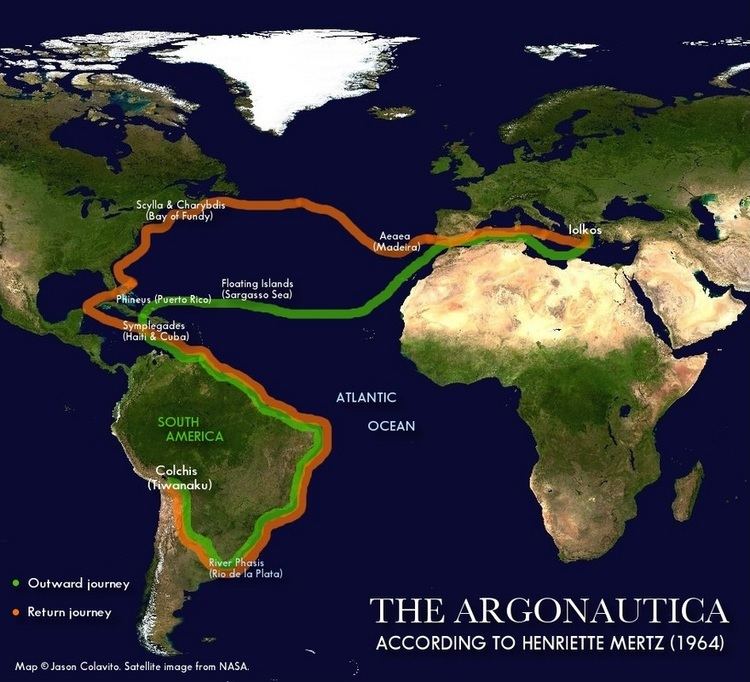Name Henriette Mertz | Died 1982 | |
 | ||
Books Pale ink;, The mystic symbol, Atlantis, dwelling place of the gods, Gods from the Far East | ||
Michigan Artifacts
Henriette Mertz (1898–1985) was an American patent attorney and ancient history researcher from Chicago. During World War II, she worked as a code-breaker for the U.S. government's cryptography department. She published several controversial works during the 1960s and 1970s relating to the early discovery and settlement of America.
Contents

Bat Creek Stone
In 1964, Mertz suggested that a photograph of the Bat Creek inscription had been published upside down. Later Cyrus H. Gordon suggested that the inscriptions were derived from a Hebrew alphabet from the 1st century AD but today mainstream archaeologists consider it to be a fraud.
Greek voyages
In her work entitled The Wine Dark Sea, Mertz argued that Odysseus sailed through the Straits of Gibraltar and into the North Atlantic. Moreover, Mertz believed that Odysseus faced Scylla and Charybdis when he arrived at the Bay of Fundy in Nova Scotia. Mertz also proposed that the Argonauts travelled across the Atlantic Ocean, down the east coast of South America, past the mouth of the Amazon and Rio de Janeiro to the Rio Plata of Argentina. From Rio Plata, Jason went to the altiplano of Bolivia and to Tihuanaco where the Golden Fleece was located.
Chinese voyages
In her work entitled Pale Ink (self-published c. 1958), Mertz proposed that two accounts of Chinese travels to Fusang—one found in the Shan Hai Jing (which Mertz dates to 2250 BC) and the other by Buddhist missionary Hui Shen in 499 AD—describe visits to the American continent. As supporting evidence she proposed that the Milk River inscriptions were Chinese glyphs made by one of the exploration parties. According to David Hatcher Childress, Mertz also interpreted Fusang as meaning "fir trees" in Chinese, and ruminated that they might refer to the fir trees of British Columbia. The hypothesis had long been rejected by academic sinologists having been first advocated in English by Charles Godfrey Leland in 1875, but apparently Mertz was unaware of these facts. In her book, Mertz also proposed that Quetzalcoatl was Hui Shen, the 5th century Buddhist traveler to Fusang. About Mertz's hypotheses, Joseph Needham writes in a footnote that "the proposed identities in general require a heroic suspension of disbelief".
Atlantis
In her work entitled Atlantis: Dwelling Place of the Gods, Mertz proposed that the eastern section of the United States (i.e. eastward from the Mississippi river and Ohio river) was where Atlantis was located as described in Greek mythology. Mertz used as proof a 1436 map belonging to Andrea Bianco that showed the Atlantic island of Antillia. However, her theory was ultimately rejected on account of Plato's dates, the fact that Atlantis sank, and the fact that "Antilla" was most likely a cartographic depiction of either Hispaniola or Cuba.
